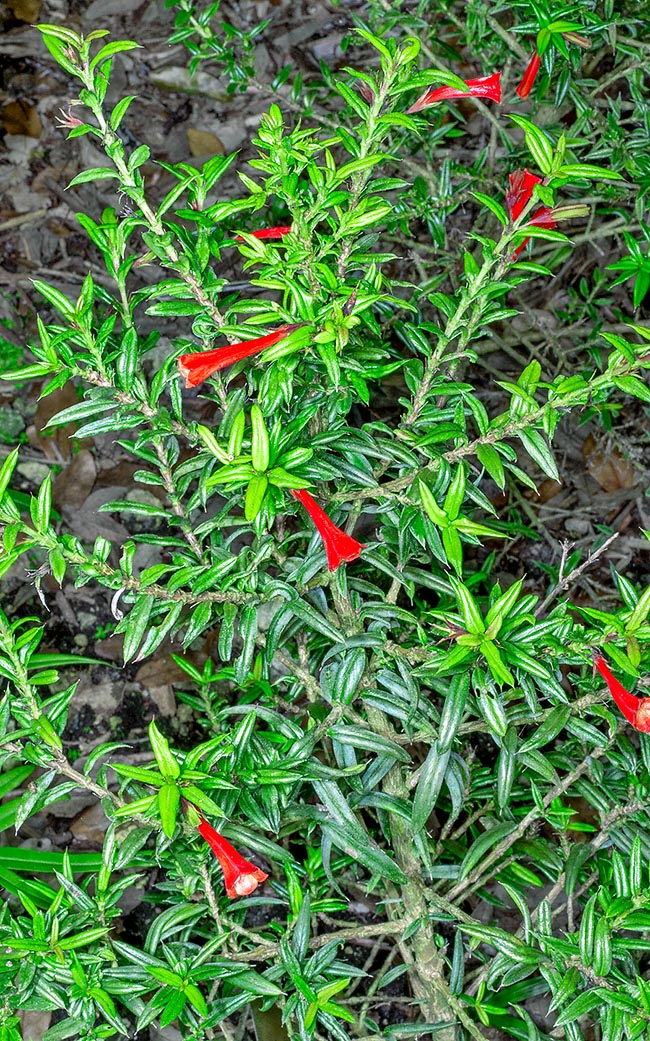Family : Rubiaceae

Text © Pietro Puccio

English translation by Mario Beltramini

Endemic to Hispaniola, the Isidorea pungens is a 1,5-3 m shrub or small tree, with leaves having spiny apex. It is almost completely unknown in cultivation, in spite of the undoubted ornamental characteristics © Giuseppe Mazza
The species is endemic to Hispaniola (Dominican Republic and Haiti) where it grows in the semi-arid forests on calcareous soils, from the sea level up to about 800 m of altitude.
The genus is dedicated to the Spanish theologian and archbishop Isidoro Hispalensis (ca. 560-636), author of the encyclopaedic opus “Etymologiarvm sive originvm Libri XX”; the specific name is the Latin adjective “pungens” = stinging (present participle of the verb “pungo” = to sting), with reference to the apex of the leaves.
Common name: palo de cruz, yaya (Dominican Republic).
The Isidorea pungens (Lam.) B.L.Rob. (1910) is a shrub or a small tree, 1,5-3 m tall, with branches of greyish bark, rigid glabrous or slightly pubescent stipules, 0,5-1,5 cm long, usually sub-sessile leaves, simple, oblong-linear to lanceolate with mucronate margin, stinging, and curved entire margin, rigid, coriaceous, of glossy dark green colour above, greyish below, 2-4,5 cm long and 0,3-1 cm broad.
Flowers on a 0,5-0,8 cm long peduncle, axillar, usually solitary or in cymes of 2-3, with campanulate calyx, 1-1,5 cm long, persistent in fruit.
Tubular or infundibuliform corolla, usually of red-orange colour, 2,2-3 cm long tube and limb with 4-6 triangular lobes with obtuse apex, about 0,4 cm long, 4 filaments, ovoid inferior ovary, filiform style and bifid stigma.
The fruit is a biloculare ovoid capsule, about 1 cm long, containing two ovate-oblong seeds, finely tubercolate.
Species almost totally unknown in cultivation, despite the undoubted ornamental characteristics, utilizable as isolated specimen in gardens of semi-desert type, for borders or barriers in the tropical and subtropical markedly seasonal climate, in full sun or slight shade, on various types of soils, with preference for the calcareous ones, provided perfectly draining.
It can be an excellent subject to grow as bonsai.
→ To appreciate the biodiversity within the RUBIACEAE family please click here.
